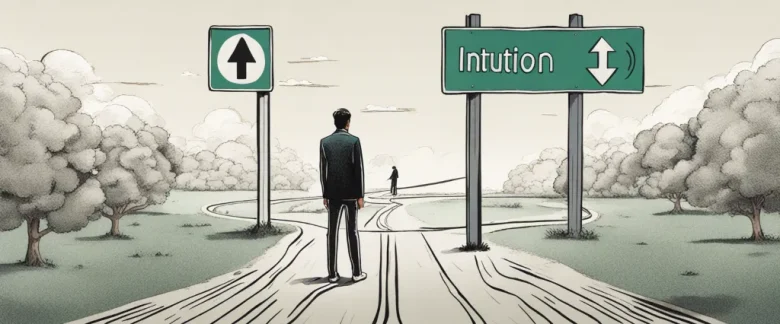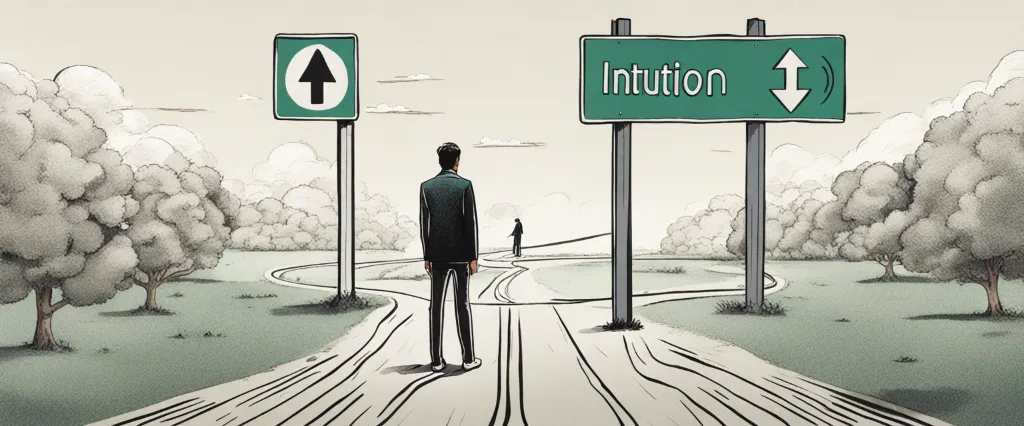In “The Magic of Thinking Big,” David J. Schwartz unveils the transformative power of adopting a positive mindset and conquering self-imposed limitations. By harnessing the magic of thinking big, individuals can break free from mediocrity, achieve their goals, and shape their own destinies. Schwartz, an esteemed professor, renowned motivational speaker, and influential author, delves into the psychology of success, offering practical strategies for overcoming fear, building confidence, and unlocking unlimited potential. His enlightening book serves as a guide to awaken the reader’s belief in their capabilities, challenging them to think bigger, dream higher, and ultimately create a life of greatness.
Chapter 1: Believe You Can Succeed and You Will: Cultivating a Positive Mindset for Success
Chapter 1 of “The Magic of Thinking Big” by David J. Schwartz, titled “Believe You Can Succeed and You Will: Cultivating a Positive Mindset for Success,” focuses on the importance of developing a positive mindset to achieve success. The chapter emphasizes the idea that individuals are capable of achieving great things if they have the right mindset and believe in their abilities.
Schwartz begins by discussing the impact that belief has on a person’s actions and achievements. He asserts that individuals who doubt their capabilities and limit their own potential are destined to fulfill their own negative expectations. On the other hand, those who believe in their abilities and have a positive mindset are more likely to succeed in their endeavors.
The author introduces the concept of the power of belief and offers practical methods for developing a positive mindset. He explains that it is crucial to banish self-destructive thoughts and replace them with positive affirmations and beliefs. Schwartz urges readers to be mindful of their thoughts and to actively challenge any negative beliefs they may have about themselves or their potential.
Additionally, Schwartz highlights the importance of visualization and the role it plays in achieving success. By vividly imagining their desired outcomes and goals, individuals can strengthen their belief and motivation to work towards achieving them.
In conclusion, this chapter serves as a reminder that believing in oneself and cultivating a positive mindset are essential for success. Through the power of belief, individuals can overcome self-doubt and unleash their true potential.
Chapter 2: Cure Yourself of Excusitis, the Failure Disease: Overcoming Limiting Beliefs and Excuses
In Chapter 2 of “The Magic of Thinking Big” by David J. Schwartz, titled “Cure Yourself of Excusitis, the Failure Disease: Overcoming Limiting Beliefs and Excuses,” the author introduces an important concept that holds many people back from achieving their goals: excusitis. Excusitis refers to the habit of making excuses for one’s failures or lack of achievement.
Schwartz explains that excusitis can take various forms, including the common “health excusitis,” where people blame poor health or physical conditions for their lack of success. In addition, he identifies other types of excusitis such as intelligence, age, educational background, luck, and lack of connections as commonly used excuses. He emphasizes that these excuses only serve as self-imposed limitations that prevent individuals from striving and succeeding at their full potential.
To overcome excusitis, Schwartz suggests several strategies. Firstly, he recommends taking responsibility for one’s actions and outcomes, acknowledging that success is primarily influenced by one’s own decisions and efforts. He advises readers to shift their mindset from focusing on the things they cannot control, such as luck, to focusing on the things they can control, such as their attitude, actions, and persistence.
Additionally, the author encourages individuals to challenge and replace their excuse-oriented beliefs with empowering and positive ones. This involves recognizing that everyone faces obstacles and setbacks but choosing not to define oneself by them. Instead, individuals should cultivate beliefs that strengthen their resilience and determination.
Schwartz also advises readers to surround themselves with positive and successful individuals who can serve as role models and provide support and encouragement. By associating with ambitious and driven people, individuals can amplify their own motivation and adopt a success-oriented mindset.
In conclusion, Chapter 2 of “The Magic of Thinking Big” teaches readers that excusitis is a self-inflicted disease that hinders personal growth and achievement. It emphasizes the importance of taking responsibility, eliminating limiting beliefs, and seeking positive influences to overcome excusitis and unlock one’s full potential in life.
Chapter 3: Build Confidence and Destroy Fear: Developing Self-Confidence and Overcoming Fear
Chapter 3 of “The Magic of Thinking Big” by David J. Schwartz focuses on the vital skill of building confidence and overcoming fear in order to achieve success. The chapter explains that self-confidence plays a crucial role in all aspects of life, from personal relationships to professional endeavors. The author emphasizes that fear is one of the biggest obstacles to success, and the key to overcoming it lies in developing strong self-confidence.
Schwartz provides practical strategies and techniques to build self-confidence and destroy fear. First, he advises readers to take control of their internal dialogue and replace self-defeating thoughts with positive affirmations. He emphasizes the importance of knowing oneself and nurturing a positive self-image, as it can greatly impact one’s level of confidence.
The author suggests that individuals should form small habits that push them out of their comfort zones. By taking small risks and gradually exposing themselves to situations that cause fear, they can incrementally build their confidence. Schwartz also highlights the significance of taking action despite feeling fear, as action is the antidote to fear. He encourages readers to view failure as a stepping stone to success and to learn from their mistakes.
Moreover, the chapter emphasizes the power of preparation in boosting confidence and reducing fear. Schwartz emphasizes the importance of thorough research and preparation before any task or challenge, as it not only enhances knowledge but also increases one’s confidence level.
Overall, Chapter 3 of “The Magic of Thinking Big” conveys the idea that developing self-confidence and conquering fear is essential for achieving personal and professional success. By implementing the strategies outlined in the chapter, individuals can cultivate a strong sense of self-confidence and overcome fear, enabling them to think bigger and take bold actions to accomplish their goals.
Chapter 4: Think Big, Act Big: Setting and Achieving Ambitious Goals

Chapter 4 of “The Magic of Thinking Big” by David J. Schwartz, titled “Think Big, Act Big: Setting and Achieving Ambitious Goals,” focuses on the importance of setting high goals and the steps needed to achieve them.
According to Schwartz, setting ambitious goals is crucial for success. He argues that it is far better to aim for big goals than to settle for mediocrity. Through various examples and anecdotes, Schwartz illustrates how people who think big and set high goals achieve great things, while those who set small goals limit their potential. He encourages readers to adopt a mindset that believes in the possibility of achieving extraordinary things and to not be afraid of failure.
Schwartz also emphasizes the importance of continually setting new goals. He suggests that once a goal is accomplished, it should act as a stepping stone to another even bigger goal. By constantly setting and pursuing ambitious goals, individuals can push their limits and achieve remarkable success. Additionally, he advises readers to visualize and imagine their goals as already achieved, reinforcing the belief that it is attainable.
The chapter also highlights the need for action. Schwartz stresses that merely thinking big is not enough; action must accompany it. He provides strategies for overcoming fear and procrastination, emphasizing the significance of taking immediate action to make progress towards goals. Schwartz suggests breaking big goals into smaller, manageable tasks, which helps to reduce feelings of overwhelm and increases the likelihood of taking action.
In summary, Chapter 4 emphasizes the importance of thinking big and setting ambitious goals. It encourages readers to believe in their potential for greatness and to continuously set new, challenging goals. Through both visualization and action, individuals can overcome fear and procrastination, leading them towards their goals and ultimate success.
Chapter 5: How to Think and Dream Creatively: Unleashing Your Imagination and Creativity
Chapter 5 of “The Magic of Thinking Big” by David J. Schwartz is titled “How to Think and Dream Creatively: Unleashing Your Imagination and Creativity.” In this chapter, Schwartz emphasizes the importance of thinking creatively and expanding one’s imagination in order to achieve extraordinary success.
According to Schwartz, creativity is not limited to artists or inventors; it is a skill that can be developed and utilized by anyone to break through barriers and come up with innovative solutions. To stimulate creative thinking, he suggests following a three-step process: saturation, incubation, and illumination.
Saturation involves immersing oneself in the topic or problem at hand by gathering information, brainstorming ideas, and exploring various perspectives. By doing so, one can expand their knowledge and open up new avenues for creative thinking.
Next, during the incubation stage, the mind is given space to process the information and ideas gathered in the saturation stage. Schwartz advises individuals to consciously let go of the problem at this stage, as the subconscious mind can work on it and come up with fresh insights.
Finally, illumination is when the creative breakthrough occurs. After a period of incubation, the mind is primed to offer innovative solutions or perspectives. Schwartz encourages individuals to seize these moments of inspiration and take action on the ideas that emerge.
Schwartz also emphasizes the importance of dreaming big. He highlights that all great accomplishments started as dreams and were brought to life through action and persistence. By expanding one’s imagination and envisioning grand goals, individuals can tap into their creativity and find innovative ways to achieve their dreams.
In conclusion, Chapter 5 of “The Magic of Thinking Big” emphasizes the significance of thinking and dreaming creatively. By following the three-step process of saturation, incubation, and illumination, individuals can unlock their imagination and tap into their creative potential. Additionally, dreaming big allows individuals to set ambitious goals and find innovative ways to turn their dreams into reality.
Chapter 6: You Are What You Think You Are: Harnessing the Power of Self-Image
Chapter 6 of “The Magic of Thinking Big” by David J. Schwartz, titled “You Are What You Think You Are: Harnessing the Power of Self-Image,” expounds on the significance of self-image and its profound impact on people’s lives. The chapter starts by stating that how we see ourselves is how we perform in life, both personally and professionally.
Schwartz highlights that our self-image acts as a self-fulfilling prophecy, influencing our actions, beliefs, and results. He emphasizes the importance of developing a positive self-image by eradicating self-deprecating thoughts and self-limiting beliefs. By focusing on our strengths, abilities, and accomplishments, we can cultivate a strong self-image that empowers us to tackle challenges and seize opportunities.
The author outlines practical strategies for improving self-image, such as visualizing success, surrounding oneself with positive people, and engaging in affirmations. He encourages readers to imagine their ideal self and to consistently reinforce this vision, as our subconscious mind is highly receptive to suggestions and has a significant influence on our behavior.
Furthermore, Schwartz discusses the link between self-image and success, highlighting that those who perceive themselves as winners tend to achieve more remarkable results. He provides notable examples of individuals who successfully transformed their self-image, thereby achieving greatness.
In conclusion, this chapter underscores the fundamental role of self-image in shaping one’s destiny. By recognizing and harnessing the power of self-image, individuals can break free from self-imposed limitations and unlock their full potential. Ultimately, one’s self-image has the power to impact every aspect of their life, leading to greater accomplishments and fulfillment.
Chapter 7: Manage Your Environment: Creating a Supportive and Positive Surroundings
Chapter 7 of “The Magic of Thinking Big” by David J. Schwartz focuses on the importance of creating a supportive and positive environment in order to enhance personal growth and achieve success. The author emphasizes that our environment plays a vital role in shaping our thoughts, actions, and overall mindset.
Schwartz highlights the influence of our physical surroundings and suggests that tidying up our work and living spaces can have a significant impact on our productivity and creativity. By creating an organized and clutter-free environment, we can reduce distractions and enhance our focus, ultimately leading to higher levels of success.
In addition to the physical environment, Schwartz also emphasizes the importance of our social environment. He suggests that we should surround ourselves with individuals who uplift and support our goals. By being in the company of positive and inspiring people, we can develop a more optimistic mindset and attract success.
The author further advises against negative influences such as gossip, complaints, and cynicism, as they can have a detrimental effect on our attitude and overall progress. Schwartz encourages readers to consciously choose their friends, colleagues, and associations based on their positive qualities and contributions.
Lastly, Schwartz discusses the impact of the media on our environment. He advises readers to limit exposure to negative news and focus on media that promotes personal growth and positive thinking. By selectively consuming positive and inspirational content, we can maintain a supportive and encouraging environment.
Overall, Chapter 7 highlights the significance of managing our environment to create a positive and supportive atmosphere that fosters personal growth and success in the pursuit of our goals. Through maintaining an organized physical space, surrounding ourselves with positive individuals, and consuming positive media, we can shape our environment to align with our aspirations and enhance our mindset.

Chapter 8: Make Your Attitudes Your Allies: Cultivating Positive Attitudes for Success
Chapter 8 of The Magic of Thinking Big, titled “Make Your Attitudes Your Allies: Cultivating Positive Attitudes for Success,” examines the crucial role that attitudes play in determining an individual’s success. David J. Schwartz emphasizes that one’s attitude is the critical factor that distinguishes winners from losers.
The chapter begins by highlighting that success is highly influenced by an optimistic, positive attitude and a strong belief in one’s abilities. Schwartz stresses that individuals must approach challenges with a can-do attitude, as this mindset enables them to turn setbacks into opportunities for growth. The author suggests several strategies to develop a positive attitude, including treating each failure as a temporary setback and embracing the philosophy of “you are what you think.”
Schwartz also emphasizes the importance of being aware of the impact of negative attitudes on success. He cautions that negative attitudes, such as self-pity, blame, and worry, can hinder personal and professional development. Instead, he encourages readers to adopt positive attitudes such as enthusiasm, confidence, and persistence, as they are instrumental in overcoming obstacles and achieving goals.
Moreover, the author provides insights into building and maintaining a positive attitude by surrounding oneself with optimistic people, avoiding negative individuals, and focusing on solutions rather than dwelling on problems. Schwartz stresses the need to cultivate an attitude of gratitude and appreciation, as this mindset enhances overall happiness and success.
In conclusion, Chapter 8 of The Magic of Thinking Big emphasizes that attitudes are powerful allies that determine success or failure. By cultivating a positive attitude, adopting the principles outlined by Schwartz, and leaving negativity behind, individuals can unlock their potential, overcome challenges, and achieve their goals.
After Reading
In conclusion, “The Magic of Thinking Big” by David J. Schwartz explores the power of one’s mindset and the impact it has on achieving success in various aspects of life. The book emphasizes the importance of thinking positively, setting ambitious goals, and embracing challenges with confidence and determination. By adopting a proactive, optimistic, and growth-oriented mindset, individuals can break through self-imposed limitations and unlock their full potential. Schwartz offers practical strategies and techniques to reshape one’s thinking and develop a winning attitude, ultimately inspiring readers to dream big and pursue their goals fearlessly. This timeless classic is a valuable resource for anyone seeking personal and professional development, serving as a reminder that success is not limited by circumstances but rather determined by the size of one’s thinking.
1. “Mindset: The New Psychology of Success” by Carol S. Dweck
In this book, Dweck explores the concept of a growth mindset versus a fixed mindset and provides valuable insights into how shifting our mindset can lead to greater success and fulfillment in life.
2. The Power of Now: A Guide to Spiritual Enlightenment” by Eckhart Tolle
Similar to “The Magic of Thinking Big,” this book focuses on the power of the mind and the importance of living in the present moment. Tolle’s teachings can help readers cultivate a deeper sense of awareness and unlock their true potential.
3. Thinking, Fast and Slow” by Daniel Kahneman
Kahneman delves into the complexities of human decision making, exploring the two systems of thinking: the fast, instinctual system, and the slow, deliberate system. This book provides valuable insights into how our thought processes can shape our actions and impact our lives.
4. The 7 Habits of Highly Effective People” by Stephen R. Covey
This classic self-help book offers practical advice on how to become highly effective in both personal and professional aspects of life. Covey outlines seven key habits that can help individuals enhance their productivity, communication skills, and overall success.
5. “Influence: The Psychology of Persuasion” by Robert B. Cialdini
This book provides a fascinating exploration of the psychological principles behind persuasion and influence. It reveals the various techniques used by individuals and organizations to sway others and offers valuable insights into how to protect ourselves from manipulation and make better decisions.




